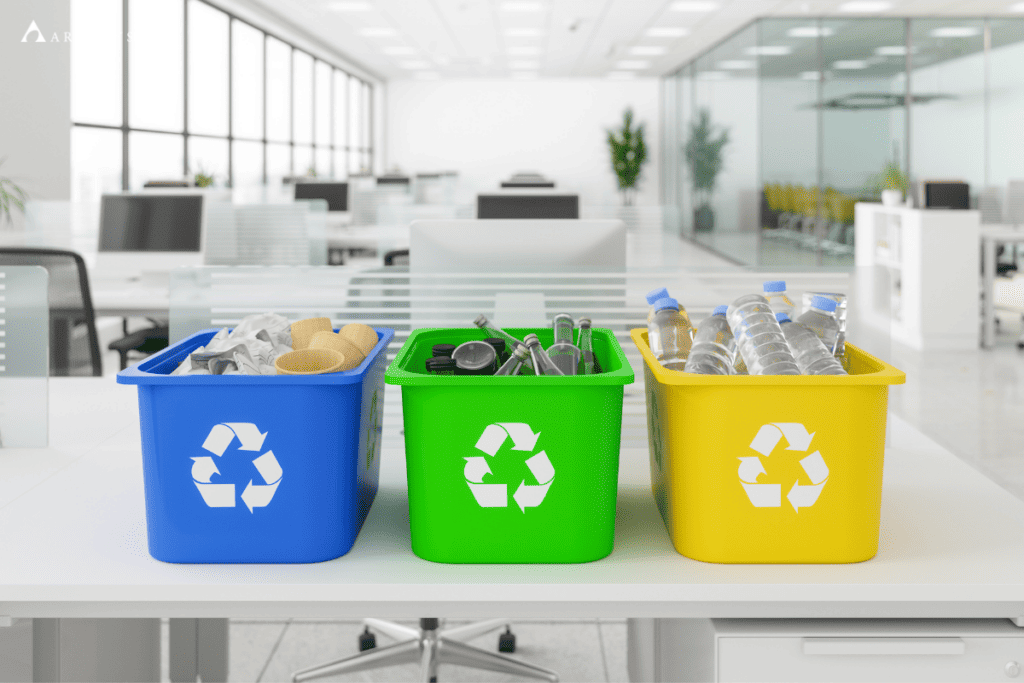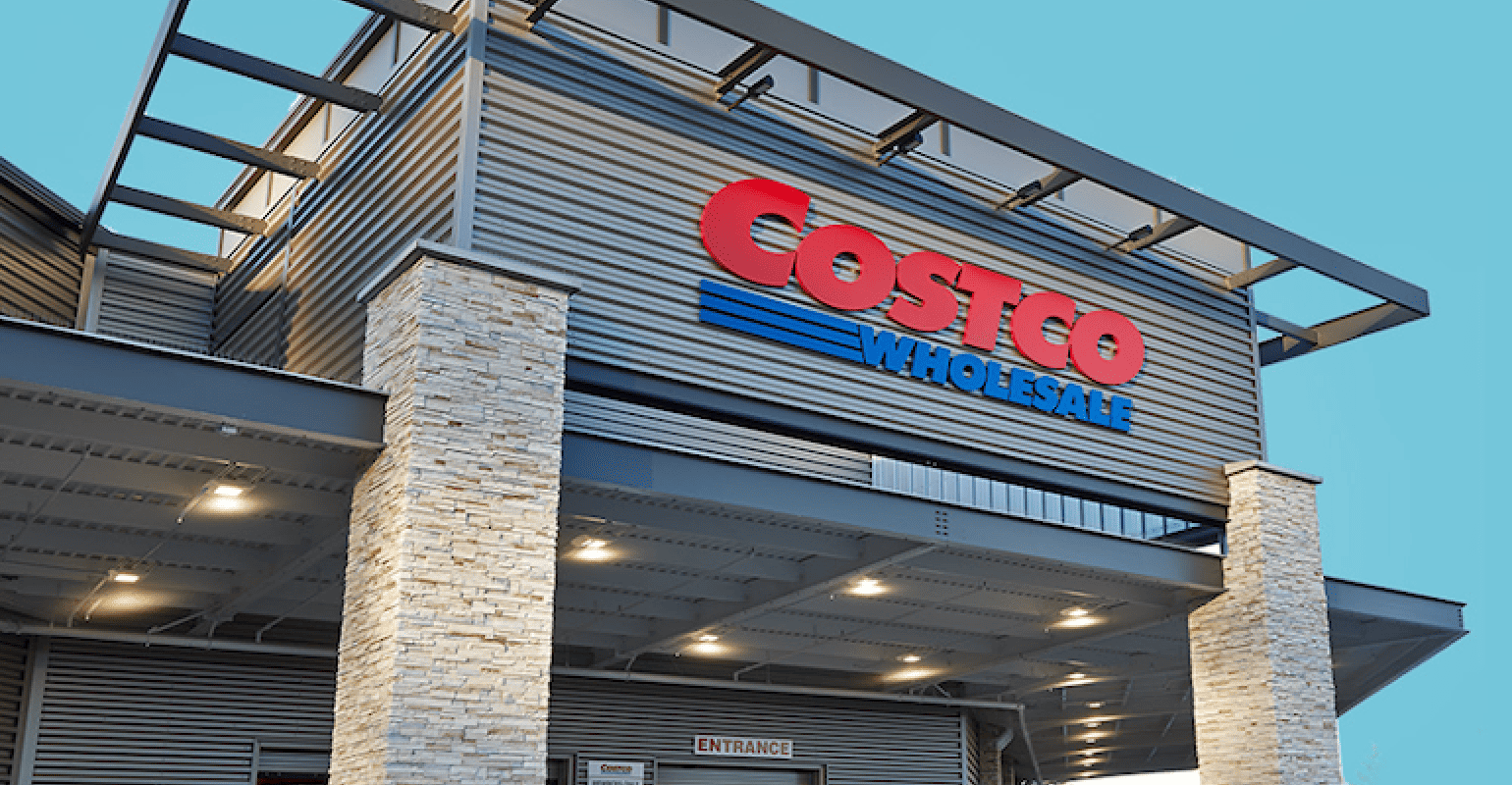Going Green: Implementing sustainable business practices and employee programs in celebration of Earth Day

April is here and it’s the time of the year to celebrate our small blue planet and all it provides every day.

Earth Day is an annual event that is celebrated on April 22nd to raise awareness about environmental issues and promote actions around making sustainable choices that can help protect our planet. This is a global event, with millions of people participating in various activities such as community cleanups, tree planting, and awareness events. By bringing people together and creating a platform for discussion and education, Earth Day encourages individuals, organizations, and governments to think about the impact they have on the planet and what they can do to make a positive change.
From a consumer demand perspective, more and more buyers of your business’ goods or services are becoming conscious about the impact their purchasing decisions have on the environment. They are increasingly choosing to spend their hard earned money on products and services from companies that are committed to sustainability and environmentally friendly practices. Consumer perception can do a lot for your brand in terms of awareness, but it can also do the opposite and lead to a damaged reputation if found out that your company isn’t keeping up with the latest green technologies. And no one wants bad press around that, right?
As much as it’s an individual responsibility for people to choose a more sustainable lifestyle for themselves and their families, small and large business organizations can and should also take the lead in making better choices for the environment. Why? Because employees want to work for good companies that care about the future. It takes dedication and discipline to commit to sustainable practices, but in turn this can help businesses attract and retain talented people to work for them for years to come. And of course, your efforts of keeping employees happy also support saving our planet!

When it comes to implementing a more environmentally friendly standard in the workplace, it’s great to get teams and employees involved to support the changes. This will give everyone their own responsibility to commit to the company’s overall goals, and make everyone feel like they are playing an important part to get there. There are several ways your business can create environmentally friendly protocols in the workplace. Here are a handful of suggestions:
Reduce energy consumption where possible:
Encouraging employees to turn off lights and electronics when not in use, such as switching off monitors, projector, and lights when leaving the boardroom after a meeting has ended are all small actionable habits that can lead to a greater impact. Installing energy-efficient light bulbs, and replacing equipment with energy-efficient appliances can lead to waste reduction. Sustainable equipment sourcing can also lead to significant cost savings for your business in the long run.
Consider Environmental, Social, and Governance investment benefits:
From an investing perspective, socially-conscious investors and stakeholders want to know a company’s stance on socioeconomic factors and its sustainability efforts before investing. This is where the ESG investing framework (Environmental, Social, and Governance) becomes increasingly important.
ESG investing is an investment approach that seeks to integrate sustainability factors into the investment decision-making process. The goal of ESG investing is to generate long-term financial returns while also having a positive impact on society and the environment.
Investors who use an ESG approach may look for companies that have strong environmental policies and practices, treat their employees fairly, have a diverse and independent board of directors, and maintain transparent and ethical business practices.
ESG investing has become increasingly popular in recent years as investors have become more aware of the potential risks and opportunities associated with environmental and social issues. Many large institutional investors, such as pension funds and endowments, now have dedicated ESG investment strategies, and some financial regulators are beginning to require companies to disclose more information about their ESG practices.
What is sustainable investing? | Spencer Seggebruch with Artesys
Reduce paper usage:
Is your team still printing out pages and pages of reports that will only be looked at for a meeting or two? It’s time to go digital! Create a paperless system and encourage employees to use electronic communication instead of printing documents. This can also support better team collaboration and engagement when everyone can access the same document and review it from their computer, whether they are in the office or working from home. Of course, sometimes printing is just necessary depending on the document or project, so in those instances always encourage double-sided printing.
When it comes to old ink cartridges, ensure your employees are not tossing these in the garbage. Many printing companies offer a complimentary recycling program to their business partners, such as mailing the empty cartridges back to them so that they can safely dispose or recycle them. This is known as closed-loop recycling, where a manufacturer can implement a recycling system in which materials are recycled and reused to create the same product, with little or no waste generated in the process. How great is that?
Create a waste sorting system:

Implement a waste sorting system and program for recycling paper, plastics, glass, and other recyclable materials, organics or food waste for compost, and garbage for single use items that cannot be recycled or reused (but of course, we want this bin to be empty most of the time!).
If your company’s building has access to an outdoor space, you could even consider creating a social committee to create and attend to a garden with the food compost collected by the office over time. This initiative could in turn inspire employees to do this at home with their families.
Green transportation:
Who wants to sit in traffic? Motivate employees to use public transportation, bike, or walk to work if accessible. For those who need to drive in, set up a carpool program for employees to commute to the office together and save on gas. Creating an incentive program for employees who choose environmentally-friendly transportation methods can help kick start these efforts across teams and get individuals excited, such as VIP parking spots for those who carpool, bike tune-up coverage, or free or discounted public transportation passes.
Educate employees:
Providing training and resources to your employees for educational purposes is a great way to amp up your company’s new environmentally friendly practices. Sharing your “why” around the importance of sustainability and having a concrete and thoughtful plan will get your employees excited about how their individual contributions can make a big impact.
One area that will get employees listening is how they can personally save money by choosing to live a greener lifestyle, and what they can do with these savings such as investing or contributing more to their retirement fund. This can be an eye-opening experience, and change the mindset and habits some may have around choosing more sustainable options around everyday purchases. Here are a few that surprised us the most:
- Buy a reusable coffee mug and bring your coffee to work from home: Depending on their coffee order, employees could be saving anywhere from $60-$120 per month, or $720-$1,440 per year! And that’s just from cutting back on buying coffee! A reusable mug is also a smart and easy way to reduce waste of to-go coffee cups and lids. If employees are married to their morning Starbucks order and do not like bringing coffee from home, encouraging them to bring their reusable mug to their local coffee shop is still an improvement and a step in a greener direction.
- Bring a lunch from home: Similarly to coffee, bringing a lunch from home does wonders for your employees’ wallets. Saving more money comes down to finding ways to limit our daily spending, and we know that ordering food can be quite the expense. We also know that packing ourselves a lunch tends to be a healthier option versus getting takeout. And from an environmentally conscious perspective, bringing a lunch from home means using reusable containers versus single use takeout containers. Packing lunch is really a win-win for everyone!
- Discontinuing fast-fashion purchases for office attire: We’ve all been in the situation where we’ve purchased a cheap article of clothing that barely survived the washing machine and dryer. That’s because many retailers are a part of the damaging fast-fashion industry, where they use cheap and environmentally harmful materials that simply do not last. Investing in quality clothing items can easily become forever pieces that employees can wear many times, and will save them money in the long run. And if they no longer like the style after a while, they can consider donating or selling it to a consignment store so that the clothing can get a second life and be used by someone else. This helps our environment by not adding more clothing items to landfills.

Showing your employees the positive financial impact of choosing to be environmentally conscious consumers has so many benefits for themselves and the planet. Supporting your employees’ futures and educating them on these saving potentials for retirement planning will boost company culture and morale. Consider hosting these sessions every April in celebration of Earth Day!
While all of these initiatives take time, resources, and discipline, they support something that’s really important for all of us and future generations. Remember to measure and track the progress of your company’s green initiatives, always celebrate your team’s achievements, and identify areas of improvement to have an even greater result and impact on our planet!
Enjoy celebrating Earth Month!


